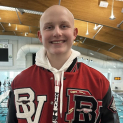Targeting of a putative unresolved wound healing process in childhood ependymoma

Brain tumors, including ependymoma that is the focus of our proposed studies, are the leading cause of childhood cancer mortality. Ependymoma has seen no advance in treatment options in over 30 years despite numerous chemotherapy clinical trials and current treatment is curative in less than 50% of cases. Innovative therapeutic approaches are therefore desperately needed for this devastating tumor. Recent technological advances allowed my laboratory to examine individual cell types and their interactions in ependymoma, unexpectedly identifying tumor biological process that are very similar to those seen in normal wound healing. The role of an aberrant wound healing process in cancer development has been proposed previously, predominantly in melanoma and other adult cancers, where the normal repair process inadvertently drives cancer growth. However, this cancerous wound healing process has never been linked to childhood cancer or brain tumors. Targeting the aberrant wound healing process to block tumor growth in ependymoma is the goal of the experiments that we propose to perform. Testing of this innovative concept promises to reveal novel therapeutic approaches for ependymoma, a tumor that has proven resistant to chemotherapy and radiation.
Project Goal:
Our novel insights into the cellular biology of childhood brain tumor ependymoma have revealed a cancerous wound healing cycle. The goals of our research project are to provide the following deliverables that are of required to translate this innovative concept into novel therapeutic approaches: (1) blocking growth of a key subpopulation of ependymoma tumor cells that are responsible for aberrantly “repairing” the tumor and inadvertently leading to tumor growth; (2) blocking “repair” signals from the “wounded”; and (3) evaluating these two cancer driving processes as tumor vulnerabilities in ependymoma that could be therapeutically targeted by novel treatments. Therapeutic vulnerabilities will be tested in laboratory models of the most aggressive ependymoma tumor type, that were specifically developed my laboratory. Validated vulnerabilities will inform future biologically based therapeutic trials for ependymoma that we can rapidly translate to clinical trials through my involvement in the major childhood cancer clinical trial groups.

